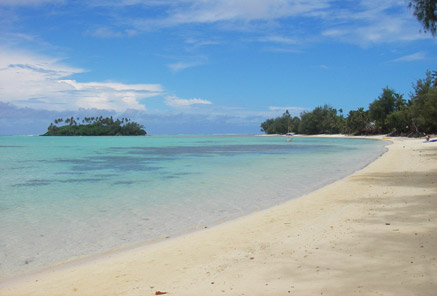Cook Islands
Geography
Land Use
People
Economy
Water Statistics
|

Status of Water Resources
The Cook Islands sources its water from two main sources. In the Southern Group of islands which includes the main island of Rarotonga, surface water is sourced from springs and streams within catchments valleys, while in the Northern Group of islands, water is sourced from rainwater and groundwater as the islands are coral atolls. Freshwater lens are present, however, the past practice of manually extracting water from wells have been abandoned.
In terms of consumption, per capita figures of about 260 litres per capita per day are high for a developing country, and water losses throughout the system are thought to be around 50%.
Problems with Water Resources and Associated Environment Issues
Generally, in comparison to similar Small Island Development States (SIDS) within the Pacific, environmental impacts are few, but the issue of sound water resources management is one of the main issues facing the Cook Islands.
In terms of current water supply system, old steel and galvanised pipes have problems with corrosion and leakage.
During the wet season the water supply is often discoloured and turbid and contains silt, sediment and debris. Thus, the water system at present is vulnerable to any form of disaster, such as contamination from agriculture chemicals, sanitation contamination and saltwater intrusion.
Septic tank systems are widely used throughout Rarotonga, comprising of a septic tank and a soak away. The septic sludge is currently dumped on vacant land, or on fields at the request of planters. There is only one reticulated sewerage system on Rarotonga, it collects sewage from the residents and is fed into septic tanks for treatment. The septic tanks were replaced in 1994 with an Enviroflow proprietary sewage treatment plant. But the plant was neither maintained nor operated correctly, and fell into disuse. The raw sewage currently bypasses the plant and flows into the sea.
The common theme in reviewing the water sector in the Cook Islands is that water management and water sector policy generally is not advanced. There is no single national water supply legislation in place except for scattered provisions that address the supply of water to the public such as the Rarotonga Waterworks Ordinance of 1960. In the absence of such a framework, water supply projects especially on the outer islands have been historically implemented without full assessment of their viability, sustainability and impact on the local community and environment.
Finally, there is a lack of commercialisation within the water sector – water is provided free in Rarotonga – and there is generally a lack of capacity and expertise including human and technical resources in the water sector, both government and private sector.
Diagnostic Report
Demonstration Proposal
Hot Spot Analysis
Information on this page obtained from Integrated Water Resources Management programme's Diagnostic Reports (SOPAC 2007)
















